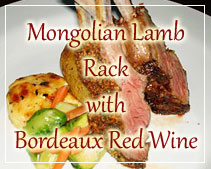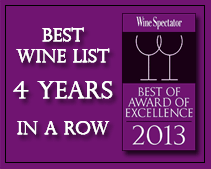Rum, and its fraternal twin, cane spirit, are made by distilling fermented sugar and water.
Date: 19th October, 2010
Manila Restaurant and Wine Bar discusses Tequila and Rum
Rum, and its fraternal twin, cane spirit, are made by distilling fermented sugar and water. This sugar comes from the sugar cane and is fermented from cane juice, concentrated cane juice, or molasses. Molasses is the sweet, sticky residue that remains after sugar cane juice is boiled and the crystallized sugar is extracted.
Most Rum is made from molasses. Molasses is over 50% sugar, but it also contains significant amounts of minerals and other trace elements, which can contribute to the final flavor. Rums made from cane juice, primarily on Haiti and Martinique, have a naturally smooth palate.
Depending on the recipe, the “wash” (the cane juice, or molasses and water) is fermented, using either cultured yeast or airborne wild yeasts, for a period ranging from 24 hours for light Rums up to several weeks for heavy, full varieties.
Distillation of Rum
Rum is distilled in the manner described in the introductory chapter of this book. The choice of stills does, however, have a profound effect on the final character of Rum. All Rums come out of the still as clear, colorless spirits. Barrel aging and the use of added caramel determine their final color. Since caramel is burnt sugar, it can be truthfully said that only natural coloring agents are used.
Lighter Rums are highly rectified (purified and blended) and are produced in column or continuous stills, after which they are usually charcoal-filtered and sometimes aged in old oak casks for a few months to add a degree of smoothness. Most light Rums have minimal flavors and aroma, and are very similar to Vodka, particularly those brands that have been charcoal-filtered. Heavier Rums are usually distilled in pot stills; similar to those used to produce Cognacs and Scotch whiskies. Pot stills are less “efficient” than column stills and some congeners (fusel oils and other flavor elements) are carried over with the alcohol. Some brands of Rum are made by blending pot and column distilled Rums in a manner similar to Armagnac production.
Classifications of Rum
White Rums are generally light-bodied (although there are a few heavy-bodied White Rums in the French islands). They are usually clear and have a very subtle flavor profile. If they are aged in oak casks to create a smooth palate they are then usually filtered to remove any color. White Rums are primarily used as mixers and blend particularly well with fruit flavors.
Golden Rums, also known as Amber Rums, are generally medium-bodied. Most have spent several years aging in oak casks, which give them smooth, mellow palates.
Dark Rums are traditionally full-bodied, rich, caramel-dominated Rums. The best are produced mostly from pot stills and frequently aged in oak casks for extended periods. The richest of these Rums are consumed straight up.
Spiced Rums can be white, golden, or dark Rums. They are infused with spices or fruit flavors. Rum punches (such as planter s punch) are blends of Rum and fruit juices that are very popular in the Caribbean.
Añejo and Age-Dated Rums are aged Rums from different vintages or batches that are mixed together to insure a continuity of flavor in brands of Rum from year to year. Some aged Rums will give age statements stating the youngest Rum in the blend (e.g., 10-year-old Rum contains a blend of Rums that are at least 10 years old). A small number of French island Rums are Vintage Dated.
Rum Regions
The Caribbean is the epicenter of world Rum production. Virtually every major island group produces its own distinct Rum style.
Barbados produces light, sweetish Rums from both pot and column stills. Rum distillation began here and the Mount Gay Distillery, dating from 1663, is probably the oldest operating Rum producer in the world.
Cuba produces light-bodied, crisp, clean Rums from column stills. It is currently illegal to ship Cuban Rums into the United States.
The Dominican Republic is notable for its full-bodied, aged Rums from column stills.
Guyana is justly famous for its rich, heavy Demerara Rums, named for a local river, which are produced from both pot and column stills. Demerara Rums can be aged for extended periods (25-year-old varieties are on the market) and are frequently used for blending with lighter Rums from other regions. Neighboring Surinam and French Guyana produce similar full-bodied Rums.
Haiti follows the French tradition of heavier Rums that are double-distilled in pot stills and aged in oak casks for three or more years to produce full-flavored, exceptionally smooth- tasting Rums. Haiti also still has an extensive underground moonshine industry that supplies the voodoo religious ritual trade.
Jamaica is well known for its rich, aromatic Rums, most of which are produced in pot stills. Jamaica has official classifications of Rum, ranging from light to very full-flavored. Jamaican Rums are extensively used for blending.
Martinique is a French island with the largest number of distilleries in the Eastern Caribbean. Both pot and column stills are used. As on other French islands such as Guadeloupe, both rhum agricole (made from sugar cane juice) and rhum industriel (made from molasses) are produced. These Rums are frequently aged in used French brandy casks for a minimum of three years. Rhum vieux (aged Rum) is frequently compared to high-quality French brandies.
Puerto Rico is known primarily for light, very dry Rums from column stills. All white Puerto Rican Rums must, by law, be aged a minimum of one year while dark Rums must be aged three years.
Trinidad produces mainly light Rums from column stills and has an extensive export trade.
The Virgin Islands, which are divided between the United States Virgin Islands and the British Virgin Island. Only the US Virgin Islands still produce Rum, predominately making light, mixing rums from column stills, although there are some fine dark and aged sipping Rums made by the most significant producer Cruzan. These Rums, and those of nearby Grenada, also serve as the base for bay Rum, a classic aftershave lotion.
Guatemala and Nicaragua are noteworthy in Central America where a variety of primarily medium-bodied Rums from column stills that lend themselves well to aging. They have recently begun to gain international recognition
Brazil produces vast quantities of mostly light Rums from column stills with unaged cane spirit called Cachaça (ca•sha•sa) the best-known example.
Venezuela makes a number of well-respected barrel-aged golden and dark Rums.
The United States has a handful of Rum distilleries in the south, producing a range of light and medium-bodied Rums that are generally marketed with Caribbean-themed names.
Canada’s 300-year-old tradition of trading Rum for dried cod fish continues in the Atlantic Maritime provinces of Newfoundland and Nova Scotia where golden Rums from Antigua, Barbados, and Jamaica are imported and aged for five years. The resulting hearty Rum is known locally as Screech.
Europe is primarily a blender of imported Rums. Both the United Kingdom and France import Rums from their former colonies in the Caribbean for aging and bottling. Heavy, dark Jamaican Rums are imported into Germany and mixed with neutral spirit at a 1:19 ratio to produce Rum verschnitt. A similar product in Austria is called Inlander Rum.
Australia produces a substantial amount of white and golden Rums in a double- distillation method utilizing both column and pot stills. Rum is the second most popular alcoholic beverage in the country after beer. Light Rums are also produced on some of the islands in the South Pacific such as Tahiti.
Asia Rums tend to follow regional sugar cane production, with white and golden Rums from column stills being produced primarily in the Philippines and Thailand.
Rum: Its History and Significance
The history of Rum is the history of sugar. Sugar is a sweet crystalline carbohydrate that occurs naturally in a variety of plants. One of those is the sugar cane (Saccharum officinarum), a tall, thick grass that has its origins in the islands of present-day Indonesia in the East Indies. Chinese traders spread its cultivation to Asia and on to India. Arabs in turn brought it to the Middle East and North Africa where it came to the attention of Europeans during the Crusades in the 11th century.
As the Spanish and Portuguese began to venture out into the Atlantic Ocean, they planted sugar cane in the Canary and Azore Islands. In 1493 Christopher Columbus picked up cane cuttings from the Canaries while on his second voyage to the Americas and transplanted them to Hispaniola, the island in the Caribbean that is now shared by Haiti and the Dominican Republic. Portuguese explorers soon did likewise in Brazil.
The Caribbean basin proved to have an ideal climate for growing sugar cane, and sugar production quickly spread around the islands. The insatiable demand in Europe for sugar soon led to the establishment of hundreds of sugar cane plantations and mills in the various English, Spanish, French, Portuguese, and Dutch colonies. These mills crushed the harvested cane and extracted the juice. Boiling this juice caused chunks of crystallized sugar to form. The remaining unsolidified juice was called melazas (from”miel,” the Spanish word for honey); in English this became molasses.
Molasses is a sticky syrup that still contains a significant amount of sugar. Sugar mill operators soon noticed that when it was mixed with water and left out in the sun it would ferment. By the 1650s this former waste product was being distilled into a spirit. In the English colonies it was called Kill Devil (from its tendency to cause a nasty hangover or its perceived medicinal power, take your choice) or rumbullion (origins uncertain), which was shortened over the years to our modern word Rum. The French render this word as rhum, while the Spanish call it ron.
Locally, Rum was used as cure-all for many of the aches and pains that afflicted those living in the tropics. Sugar plantation owners also sold it, at discounted prices, to naval ships that were on station in the Caribbean in order to encourage their presence in local waters and thus discourage the attentions of marauding pirates. The British navy adopted a daily ration of a half-pint of 160 proof Rum by the 1730s. This ration was subsequently modified by mixing it with an equal amount of water to produce a drink called grog. The grog ration remained a staple of British naval life until 1969.
This naval-Rum connection introduced Rum to the outside world and by the late 17th century a thriving export trade developed. The British islands shipped Rum to Great Britain (where it was mixed into Rum punches and replaced gin as the dominant spirit in the 18th century) and to the British colonies in North America where it became very popular. This export of Rum to North America, in exchange for New England lumber and dried cod (still a culinary staple in the Caribbean) soon changed over to the export of molasses to distilleries in New England. This was done in order to avoid laws from the British parliament, which protected British distillers by forbidding the trade in spirits directly between colonies. This law was, at best, honored in the breech, and smuggling soon became rampant.
The shipping of molasses to make Rum in New England distilleries became part of the infamous “slavery triangle.” The first leg was the shipment of molasses to New England to make Rum. The second leg was the shipment of Rum to the ports of West Africa to trade for slaves. The final leg was the passage of slave ships to the sugar plantations of the Caribbean and South America where many of the slaves were put to work in the sugar cane fields.
The disruption of trade caused by the American Revolution and the rise of whisky production in North America resulted in the slow decline of Rum s dominance as the American national tipple. Rum production in the United States slowly decreased through the 19th century, with the last New England Rum distilleries closing at the advent of National Prohibition in 1920. The famed rumrunners of the Prohibition era were primarily smuggling whiskey into the United States.
In Europe the invention of sugar extraction from the sugar beet lessened the demand for Caribbean sugar, reducing the amount of molasses being produced and the resulting amount of Rum being distilled. Many small plantations and their stills were closed. Rum production receded, for the most part, to countries where sugar cane was grown.
The modern history of Rum owes a lot to the spread of air conditioning and the growth of tourism. In the second half of the 20th century, modern air conditioning made it possible for large numbers of people to migrate to warm-weather regions where Rum remained the dominant spirit. Additionally, the explosive increase in the number of North American and European tourists into Rum-drinking regions lead to a steady rise in the popularity of Rum-based mixed drinks. Nowadays White Rum gives Vodka serious competition as the mixer of choice in a number of distinctively nontropical markets.
Aged Rums are gaining new standing among consumers of single malt Scotch whiskies, Armagnacs, and small-batch Bourbons who are learning to appreciate the subtle complexities of these Rums. The pot still Rums of Guyana and Jamaica have a particular appeal for Scotch whisky drinkers (it is no accident that the Scottish whisky merchant and bottler Cadenhead also ages and bottles Demerara Rum), while the subtle and complex rhums of Martinique and Guadeloupe mirror the flavor profiles of the top French brandies in Cognac and Armagnac.
Are these articles useful for enhancing your wine and dine experience in Manila and other cities like Pampanga Angles City, Subic and Clark Philippines. Do they also help you with travel, leisure, vacation, dining out, nightlife and other leisure activities plans in Philippines? Yats Restaurant hopes to supply you with plenty of information to plan out your trips from Manila to Pampanga Angeles City Clark Freeport Zone whether you are travelling from Manila or other Asian countries such as Hong Kong, Shanghai, Singapore, Malaysia or Korea.
Philippines Restaurant reservations in Manila, Subic, Pampanga Angles City or Clark Freeport Zone, planning of menu, selection of wine for dinner and booking a private function and nightlife and event in Angeles City Clark Freeport Zone can all be handled. Yats Restaurant and Wine Bar has been regarded by many to be the premier restaurant north of Manila Philippines. Its 3000-line award-winning restaurant wine list has kept many wine lovers happy dining in this restaurant in Pampanga Clark Philippines for over a decade.
Yats Restaurant and Wine Bar was built by Hong Kong-based Yats International in 2000 to provide a world-class fine dining restaurant, business meeting facilities and venues for private dinners and functions in Pampanga Angeles City Clark Freeport Zone. Pampanga Angeles City Clark Philippines was selected for this restaurant because of safety, clean air, absence of traffic and proximity to Manila and Subic.
For comments, inquiries and reservations, email Restaurant@Yats-International.com or call these numbers:
(045) 599-5600 0922-870-5178 0917-520-4401 ask for Ernest or Pedro.
Http://www.YatsRestaurant.com
Getting to this fine dining restaurant of Angeles City Clark Freeport Zone Pampanga Philippines
How to get to this fine-dining restaurant in Clark Philippines? Once you get to Clark Freeport, go straight until you hit Mimosa. After you enter Mimosa, stay on the left on Mimosa Drive, go past the Holiday Inn and Yats Restaurant (green top, independent 1-storey structure) is on your left. Just past the Yats Restaurant is the London Pub.
Source: http://www.tastings.com/spirits/rum.html









